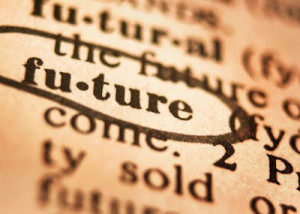
As part of your journey mapping efforts, you’ll likely (well, need to) create two types of maps:
(1) current state maps
(2) future state maps
Current state maps show the steps that customers take today to complete some task, while future state maps show the steps they will be taking to complete the task after the process has been redesigned.
Future state maps are realistic (not ridiculous) representations of what the experience will become. In other words, inefficiencies and painpoints identified in the current state will be eliminated when the script is rewritten for the future state. This should be differentiated from a “wishful state map,” which I’ll define as an everything-and-the-kitchen-sink-wouldn’t-that-be-cool-if-it-could-do-that kind of experience map. Maybe you’ll get there someday, but for now, let’s focus on what’s realistic for the future state, since that’s challenging enough for most to achieve.
I love when people are excited to map the future state; that means that change is about to happen, and for most customer experiences, this is a great thing! But know that the future state map is not the first map you’ll ever create, nor is it something you’ll do immediately after creating the current state map. There’s some research that needs to be done first.
Why?
Because you can’t transform something you don’t understand.
And you can’t jump ahead to the last chapter of the book without reading the 17 chapters that come before it.
Let’s step back a second and look at the current state map. During the current state mapping exercise, you’ll uncover what the customer is doing, thinking, and feeling; what’s going well; what isn’t; and what those key moments of truth are. Today. What you won’t be doing is problem solving or designing the experience of tomorrow. You’re not looking for solutions at this stage; you’re simply trying to understand what the customer experience is now.
After that current state map is complete, you are not yet equipped to create a future state map. Why? Because of the most important rule of journey mapping. If you create a future state map now, you’ll be perpetuating inside-out thinking; you’ll map an experience based on what you believe the customer wants rather than asking – or listening to – the customer. There are a couple more steps before you get there.
Your next step is to ensure you bring the customer voice into the map, validate the current state, and talk to customers about what they are trying to achieve, what problems they are trying to solve, what their expectations are, and more.
During your map validation exercise – after you’ve validated the current state – you might pose the following to customers:
I’m going to put you in the driver’s seat now. I’m going to ask you to think about this task again and tell me how you would design the journey.
- What would the ideal experience look like to you?
- How would you change the process/steps you go through now to {insert your scenario}?
Let customers know that you’re looking for their ideal experience and that this exercise is informative and will help direct your thinking as you move into ideation, innovation, and redesign. Only with this information can you begin to formulate what the future state map will look like. Create the map based on your customer listening and research.
Here’s the bottom line. We can’t design the future state without first understanding the current state. We can’t move from current state to future state without customer research. We need to stop ourselves from wanting to design the experience for the customer without customer input. That’s how we got to where we are. That’s why the experience is what it is today.
We can’t solve problems by using the same kind of thinking we used when we created them. -Albert Einstein
This article was syndicated from Business 2 Community: Can’t Get to Future State Without Knowing Current State
More Sales & Marketing articles from Business 2 Community:




